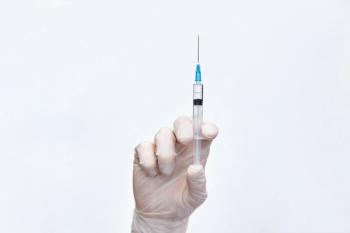
Using Health Risk Assessments to Identify Service Opportunities
Implementing a health risk assessment (HRA) into an appointment-based workflow model for your pharmacy can improve patient outcomes and may even provide opportunities to perform billable services.
During a virtual poster presentation at the American Pharmacists Association Annual Meeting and Exposition, which was held March 12-15, Erica Jackson, PGY1 community-based resident with the University of Pittsburgh School of Pharmacy and Asti’s South Hills Pharmacy, discussed how community pharmacies can integrate HRAs within an appointment-based workflow.
HRAs are questionnaires used to help stratify patients and their risks for poor health outcomes on comorbid conditions, health disparities, and habits regarding their health. As the most trusted and accessible health care providers, community pharmacists are well positioned to effectively administer HRAs and improve patient outcomes. Using HRAs can also present opportunities for matching patients with billable pharmacy services.
Jackson discussed the implementation steps that were taken to integrate the HRA process into her pharmacy’s medication synchronization and medication adherence packaging programs.
The HRA questionnaire was provided by a Pennsylvania Medicaid managed care organization (MCO). It included 16 questions administered telephonically or in person divided and took place over 2 patient interactions. Handouts with standardized MCO resources were provided to each patient.
Pharmacy technicians received training to administer HRAs with monthly adherence and medication synchronization calls. The responses were documented by the technician and sent via HIPAA-compliant messaging to the pharmacist. If an immediate referral for the patient was needed, the questionnaire contained explicit instructions for the technician to follow. Additionally, if patients were unable to be reached for their monthly check in, the prescription bag was marked with a red tag to flag for pharmacy staff intervention prior to point of sale.
Of the 49 patients who were eligible, 79.6% were successfully contacted at both outreach appointments. Several service opportunities were identified:
- Of the 15 patients who were identified as eligible for smoking cessation services, 7 accepted follow up phone calls.
- Three patients were deemed eligible for referral to treatment based on drug or alcohol consumption. However, all of them declined to follow up.
- Of the 14 patients eligible for the Diabetes Prevention Program, 2 were interested in follow up.
- Of the 8 patients eligible for Asthma Control Tests, 4 accepted.
- Influenza vaccination opportunities were identified in 61% of patients, pneumococcal in 37%, and other vaccinations in 32%.
“Implementing a health risk assessment into the community pharmacy workflow is both possible and has shown benefits to patients through conversations regarding health and any unmet needs that the patient is experiencing,” Jackson said.
She indicated that even if pharmacy staff are unable to directly help patients, they can still connect patients to the right resources. Additionally, Jackson noted that the pharmacy was able to bill the MCO for smoking cessation visits that occurred as a result of the HRA.
“This may pave the way for future payer contracts that directly reimburse for services in the community pharmacy,” she concluded.
Reference
- Jackson E, Pitzarella S, McGrath S, et al. Implementation of a health risk assessment into an appointment-based model workflow at an independent community pharmacy. Presented at: American Pharmacists Association 2021 Annual Meeting and Exposition; March 12-15, 2021; virtual. Accessed March 18, 2021.
Newsletter
Pharmacy practice is always changing. Stay ahead of the curve with the Drug Topics newsletter and get the latest drug information, industry trends, and patient care tips.















































































































